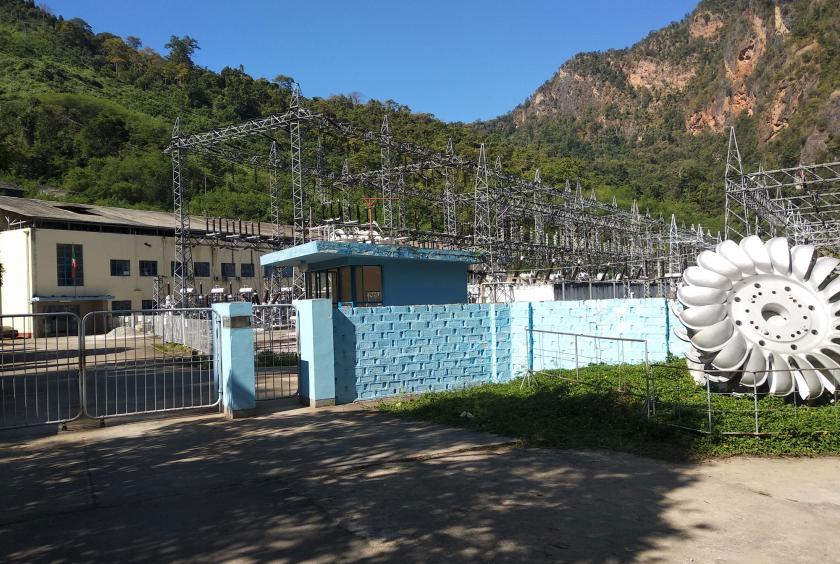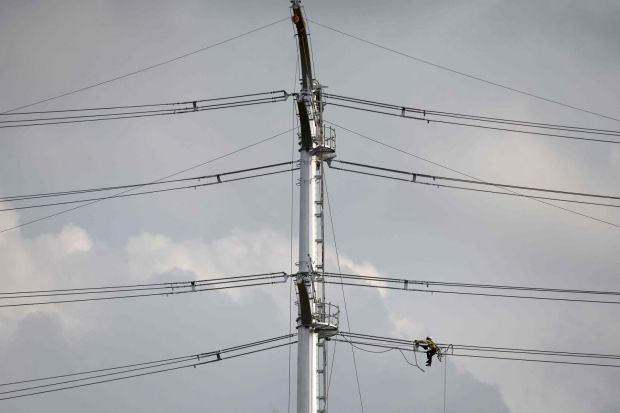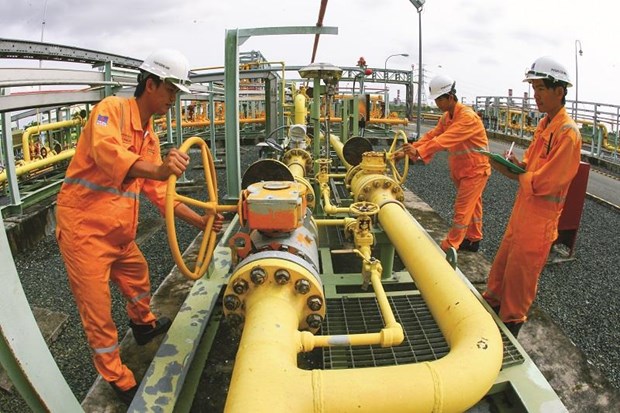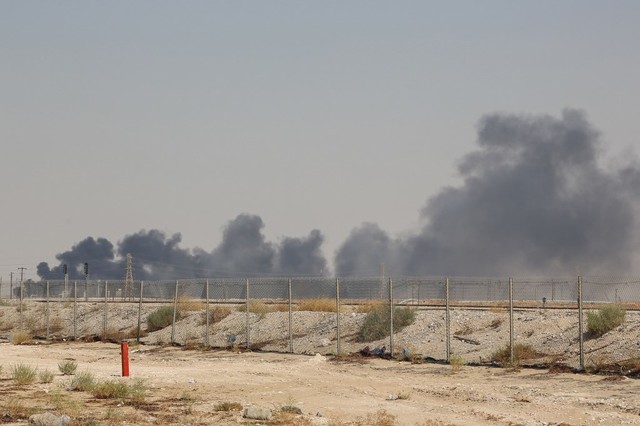HÀ NỘI — Fitch Ratings has assigned the Vietnam Oil and Gas Group’s (PetroVietnam or PVN) first-time long-term foreign-currency issuer default rating (IDR) at ‘BB’ with a positive outlook.
The agency has also assigned PVN a senior unsecured rating of ‘BB’ and standalone credit profile (SCP) at ‘bb+’, reflecting the company’s high degree of integration, diversification and conservative financial profile.
PVN’s IDR is constrained by that of its parent, the Việt Nam sovereign (BB/Positive), under Fitch’s government-related entities (GRE) rating criteria.
This is a positive credit rating that helps PVN improve its ability to mobilise capital in the international market and diversify the mobilised capital sources for investment projects in the context of restrictions in loans guaranteed by the Government.
It proves PVN’s strong financial status and business performance as well as its positive business prospects in the future, which bring confidence to domestic and foreign investors, financial institutions and strategic partners, especially in the period that PVN is promoting its restructuring.
In the statement, Fitch highlights the robust State linkages with PVN. Fitch assesses the status, ownership and control factor under our GRE criteria as ‘Very Strong’. PVN’s annual targets are set and approved by Vietnamese Government and its management is State-appointed. PVN is also Việt Nam’s national oil company and benefits from exclusive rights to the country’s oil and gas reserves by regulation. Fitch regards the support record as ‘Strong’.
“PVN has not required tangible financial support in at least five years due to its strong financial profile, although we expect support to be forthcoming if required,” Fitch said.
Fitch assesses the socio-political implications of a PVN default as ‘Very Strong’. Any disruptions in PVN’s operations would have material implications for the entire energy value chain in Việt Nam.
PVN holds interests in all of Việt Nam’s upstream oil and gas assets, accounts for about a third of the country’s refined product output, and supplies gas for power plants which make up about 15 per cent of Việt Nam’s power generation. PVN also accounts for about 80 per cent of Việt Nam’s fertiliser production.
Meanwhile, PVN’s power generation revenues are based on long-term power purchase agreements with the State power utility, Vietnam Electricity (EVN, BB/Positive), and include cost pass-through mechanisms.
Earnings from gas distribution are generally based on fixed selling prices that are increased annually and are sold mostly to EVN and PVN’s power plants. Earnings from these two segments account for about 40 per cent of PVN’s gross profit and help reduce volatility from its upstream and downstream businesses.
According to Fitch, PVN’s upstream cash flow is relatively more sensitive to oil price fluctuations compared with other APAC national oil companies due to costs. The upstream segment contributed to 17 per cent of consolidated gross profits in 2018.
Fitch expects PVN’s upstream operations to account for about 25 per cent of its consolidated gross profit in the next three to four years, based on Fitch’s oil price assumptions.
PVN’s investment is projected to rise significantly to VNĐ321 trillion (US$13.95 billion) over the next five years, from VNĐ38 trillion last year. PVN estimates over half of its expected consolidated capex and investment will be used to develop its upstream resources, mainly gas fields.
“This positive credit rating results were thanks to the close direction of the Party and State leaders, the effective and close coordination of ministries and branches for PVN, as well as the solidarity and efforts of all PVN employees in recent years. The results are also one of the bases for PVN to review and improve its corporate governance, especially financial indicators, to ensure that the ranking is continually maintained and improved in the future,” Lê Mạnh Hùng, General Director of PVN, said, adding with the care and direction of the Party and State leaders, as well as great efforts made by all EVN’s employees, PVN will continue to contribute more to the successful development of Viet Nam.
Nirukt Sapru, CEO – Vietnam, ASEAN and South Asia Cluster Markets, Standard Chartered Bank, which is the only consultant for PVN in the rating, said: “We are honored to support PVN in its first time international ranking and we congratulate PVN for the achieved excellent rating results. This is a testament to the robust and integrated financial management in PVN’s business activities. Credit rating is a solid first step for PVN in raising capital in the international market, and we believe it will help attract the attention of international investors. Standard Chartered has a strong commitment to Việt Nam, the market we have been in for 115 years. We are delighted to be able to leverage our in-depth understanding of the local market with a wealth of international expertise, and we are committed to continuing to support PVN in realising its growth targets.” — VNS
Read more at http://vietnamnews.vn/economy/535465/fitch-ratings-assigns-petrovietnam-at-bb-for-first-time.html#WR39PIlF8cfv29oQ.99








